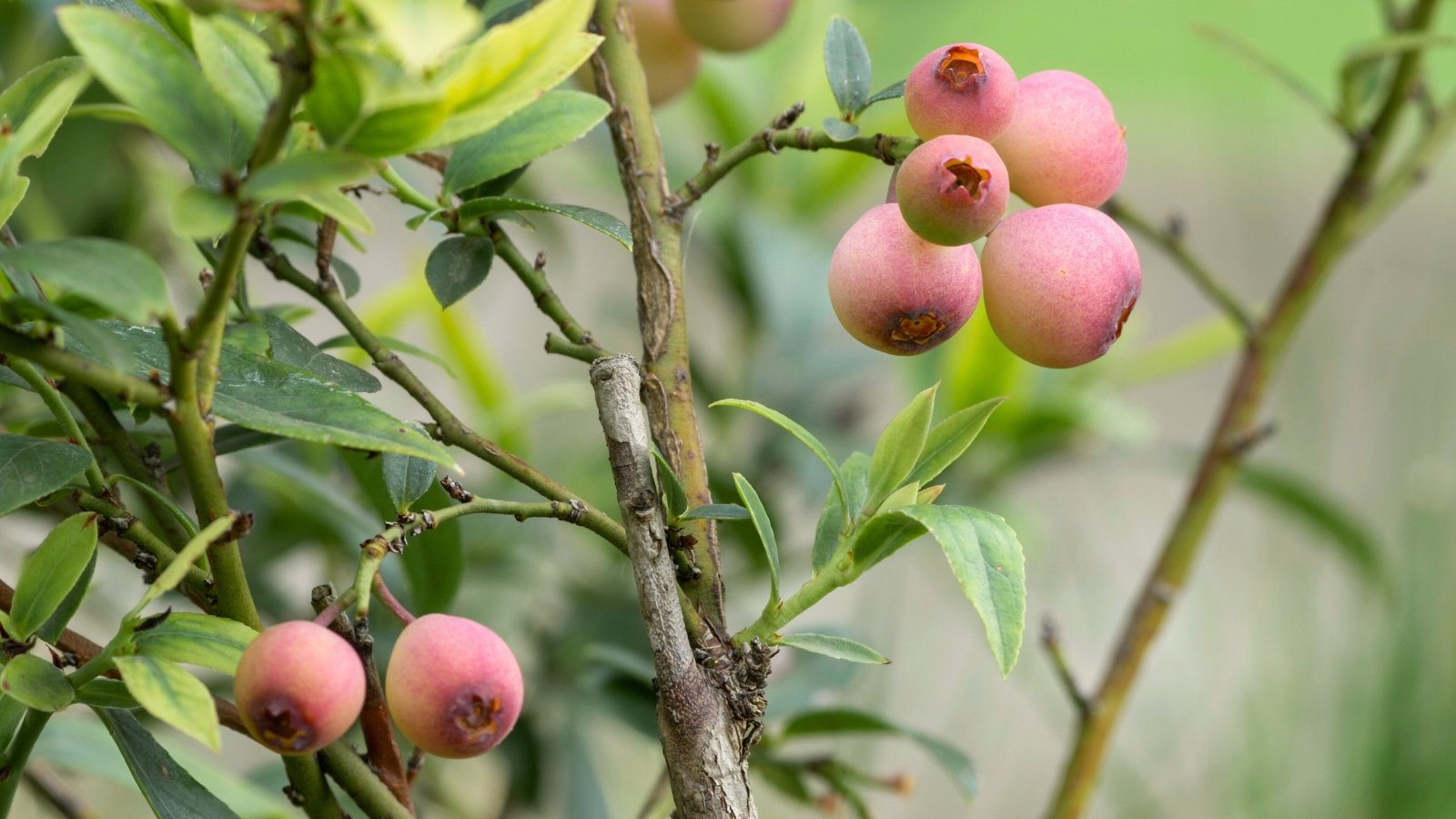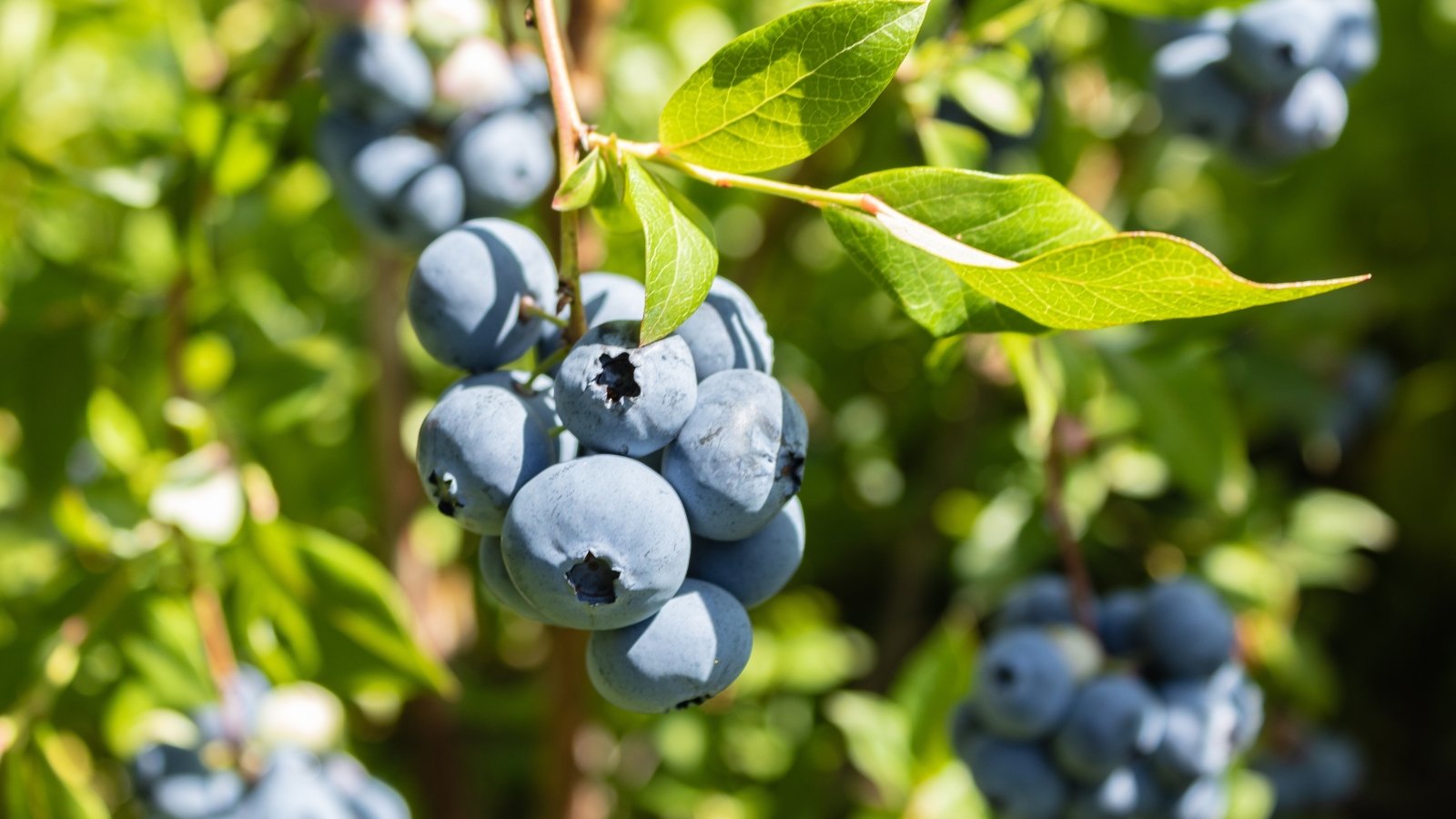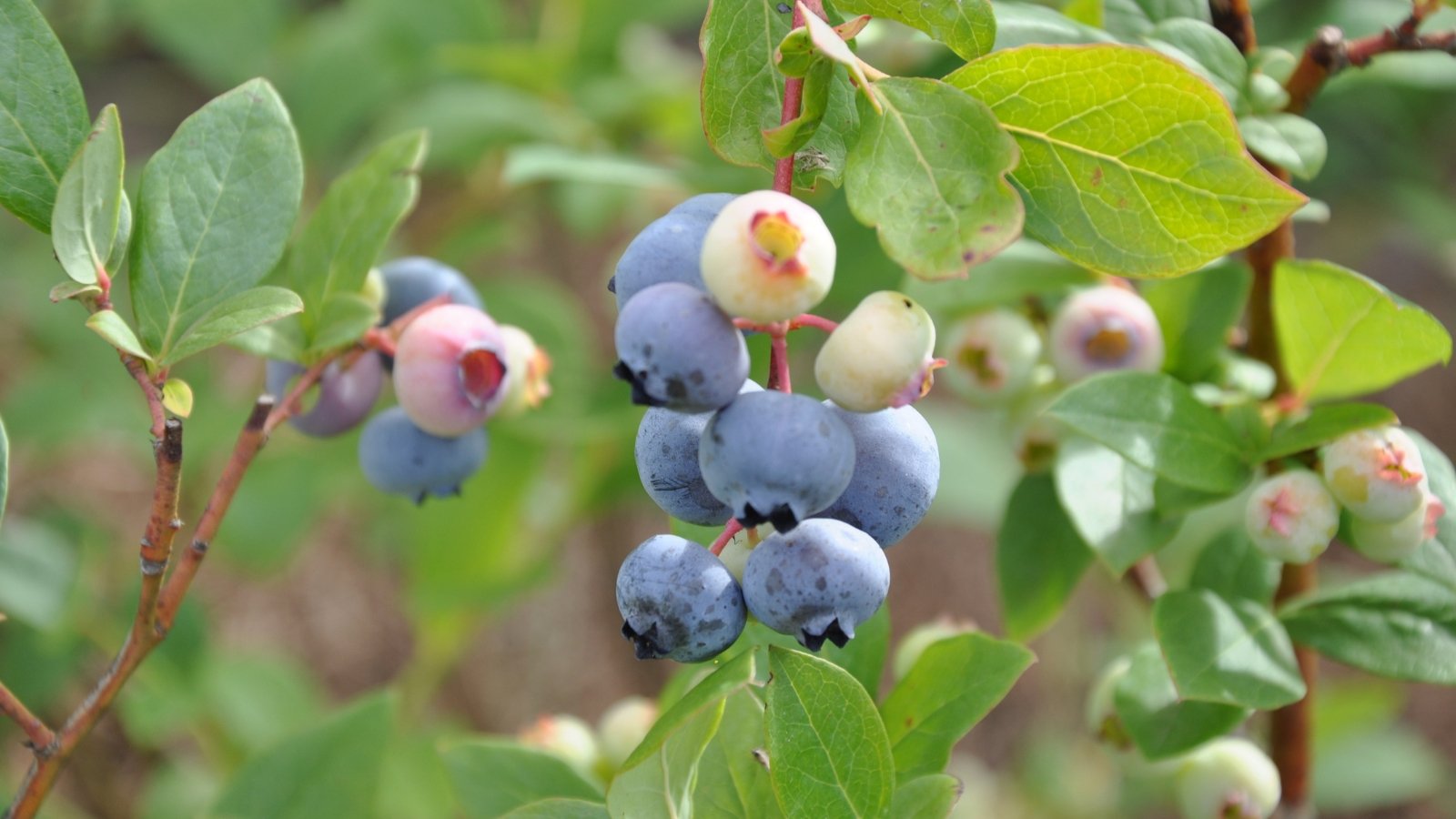PROTECT YOUR DNA WITH QUANTUM TECHNOLOGY
Orgo-Life the new way to the future Advertising by AdpathwayGrowing blueberries in pots and containers is an accessible way to enjoy our favorite berries in a variety of garden spaces. From balconies to patios, a big tub becomes home to viable yields of the sweet, tangy, antioxidant-rich fruits.
While the summertime berries are the draw, the ornamental appeal of the shrubs can’t be overlooked. In fact, we should grow them more in our landscapes. They bring ornamental and ecological value year-round. Wild blueberries originate in North America, and cultivated varieties bring traits to suit specific climates and growing regions. The woody shrubs attract pollinators with their spring blossoms, and the berries make prime forage for birds and wildlife (if you’re willing to share).
Blueberries in pots and containers bring multi-season interest as single specimens. Plan to grow more than one cultivar for the heaviest yields. Their handsome blue-green foliage, petite bell blooms, and striking fall color are attributes beyond the berries.

Growing Blueberries in Pots
 Pairing different types helps boost fruit with better cross-pollination.
Pairing different types helps boost fruit with better cross-pollination.To grow blueberries in pots, first select varieties that thrive in your growing zone. Different types suit different regions, with those that perform best in cool climates (northern highbush), those for mild growing areas (southern highbush), and heat and humidity-tolerant rabbiteye varieties.
Blueberries require a certain amount of chill time that varies by type. Northern highbush often requires several weeks between 32 and 45°F (0-7°C). Southern highbush may only need several days, or about 150 chill hours. Chill hours regulate the shrub’s growth, signaling when it’s time to break dormancy.
Although blueberries are mostly self-sterile, they all benefit from cross-pollination from another cultivar that blooms at the same time. They’ll produce heavier yields of larger berries with another Vaccinium nearby. Plan to grow one shrub per pot, but employ more than one if you have the space. With early, mid, and late-season varieties, look for those with flowering that overlaps from a variety in the same species.
The next consideration for blueberries in pots and containers is the size of the shrub. Blueberries range from lowbush to half-high to highbush. Smaller, more compact varieties adapt readily to container culture and are easy to manage.
The best container for the woody shrubs is a large one, at least 24 inches deep and as wide. This sizing allows plenty of room for mature roots and leafy upper growth. Opt for containers with good drainage, and use a potting mix formulated for acid-loving plants like azaleas, rhododendrons, and camellias.
Blueberries rely on acidic soils and do best with a pH of 4.0-5.5. If not using an acidic formulated mix, amend with pine bark fines (a lasting peat moss alternative) or peat to raise the acidity of the mix.
Siting and Care
 Feeding with acid-loving fertilizer boosts springtime growth nicely.
Feeding with acid-loving fertilizer boosts springtime growth nicely.Situate blueberries in pots and containers where they’ll receive full sun for six or more hours. They tolerate less sun (about four hours or more) and appreciate protection from the intense afternoon rays in hot climates.
Plan to provide extra protection in winter by digging or insulating the pots, or moving them to a cool, sheltered location out of frigid temperatures and drying winds. Specimens in pots are more susceptible to damage from winter conditions than those in the ground, as they lack insulation from the surrounding soil mass.
Water the containers regularly, as Vaccinium relies on consistently moist soils for the best vigor and fruiting. In spring, fertilize blueberries in pots with a formula for acid-loving plants before new growth emerges. The shrubs are sensitive to nitrates and aren’t heavy feeders, given organic soils.
‘Pink Lemonade’
 Glossy, firm fruits appear later in the summer season.
Glossy, firm fruits appear later in the summer season.Blueberries start pale green and often turn pink before ripening to deep purple-blue. But with ‘Pink Lemonade,’ they stay that shade even when ripe. The special rosy berry holds a mild and slightly citrusy flavor. With a high sugar content, it’s one of the sweetest of the bunch.
‘Pink Lemonade’ yields firm, glossy fruits in mid-to late-season (the latter half of July). The variety is out of the USDA Agricultural Research Station housed in Chatsworth, New Jersey. Its parents are an experimental highbush and a commercial rabbiteye, ‘Delite’ from the USDA and the University of Georgia. With its parentage, it grows across regions. The delightful offspring is deliciously marketed under the ‘Pink Lemonade’ moniker. The award-winner was “Best New Shrub” at the esteemed Farwest horticultural show.
In addition to its pretty in pink berries, the shrub makes an attractive, compact potted specimen with shiny leaves and sienna branches that show in winter. ‘Pink Lemonade’ requires 200-300 chill hours to produce.
‘Duke’
 Long-lived shrubs can yield plenty for freezing and sharing.
Long-lived shrubs can yield plenty for freezing and sharing.‘Duke’ is a top performer for cold climates as a hardy northern highbush. The high-yielding, early-season producer is among the first to ripen. While it ripens early, it blooms later in spring, protecting it from frost damage.
‘Duke’ fruits are large, firm, and harvestable by the handful. The crisp rounds have a sweet and tangy flavor, making them a classic favorite. A single plant can produce up to 20 pounds of fruit. While Vaccinium are slow-growing and produce the most yields after about five years, it’s long-lived at 50 years or more. The mature production of ‘Duke’ leaves plenty for preserving, freezing, and sharing.
‘Duke’ is a reliable producer and a Royal Horticultural Society Award of Garden Merit recipient. It’s a good option for beginners and experienced growers alike for its easy growing and prolific cropping. Allow 800-1000 chill hours to enjoy the robust clusters.
‘Bluecrop’
 Juicy, mild fruits keep coming well into the fall.
Juicy, mild fruits keep coming well into the fall.‘Bluecrop’ is a northern highbush variety and a favorite for its large, juicy fruits. With a mild flavor, the berries are perfect for popping fresh and for baking in desserts. In addition to taste, they have a long harvest season, producing loads of the sweet rounds into fall.
The berries are light blue and ½ inch in diameter. They ripen mid-season. Post-harvest, the ornamental shrubs show red fall color and reddish-brown stems when leaves drop.
‘Bluecrop’ is a 1934 heirloom that came to market in 1941. The long-running variety remains a top performer in cold climates with high production and disease resistance. It needs 700-800 chill hours to promote the best fruiting.
‘Sunshine Blue’
 Great for growers wanting sweetness without long cold spells.
Great for growers wanting sweetness without long cold spells.This southern highbush is a perfect blueberry for pots and containers in mild growing regions. The low-growing shrub has a width to match its height, at only a few feet, making it easy to manage in half barrels, tubs, and other large vessels.
With low chill hours (150), ‘Sunshine Blue’ doesn’t require prolonged cold temperatures to produce abundant fruits. It tolerates heat and humidity with good disease resistance, and also handles less acidic soils well. Moving toward only slightly acidic, ‘Sunshine Blue’ performs in a pH range of up to 6.8.
‘Sunshine Blue’ has pretty blue-green leaves and pinkish-white blooms that open in late spring. Each plant produces 5 to 10 pounds of berries.
‘Bushel and Berry® Silver Dollar®’
 Compact and charming with two harvests to enjoy yearly.
Compact and charming with two harvests to enjoy yearly.‘Silver Dollar®’ is unique in berry, foliage, and form. The large blueberries are sweet and crisp with notes of pineapple. Leaves are striking as silvery-blue rounds (similar to Eucalyptus) with pink blushes before turning deep green in summer. A blueberry made for pots and containers, ‘Silver Dollar’ only grows a few feet tall and wide at max.
The robust, dwarf cultivar ripens in July and bears a second harvest in the fall (usually October). A highbush hybrid, it requires 500 hours of chill.
Others in the Bushel and Berry® line include ‘Jelly Bean,’ with a juicy flavor like jam, and ‘BerryBux,’ with boxwood-type leaves and form. Both are dwarf varieties well-suited to container culture with neat, tidy habits and dark, rich fruits.
‘Bountiful Blue®’
 Early chill hours bring generous harvests of tasty treats.
Early chill hours bring generous harvests of tasty treats.‘Bountiful Blue®’ brings pretty blue foliage to a mounded, compact form. It produces loads of berries and looks great doing so. This southern highbush needs only 150-200 chill hours to produce high yields of large, sweet, and slightly tart berries. While self-pollinating, like all Vaccinium, berries will be bigger and more numerous with another cultivar nearby.
Winner of “Best Edible Plant” at the 2011 Farwest Show, ‘Bountiful Blue®’ is showy in a large pot. Fall color is rich shades of scarlet. Others in the Bountiful series include ‘Bountiful Baby®’, which stays very small at two to three feet, and ‘Bountiful Belle®’ with dusky, silvery pink new growth. Both ‘Baby’ and ‘Belle’ need 800 chill hours.
Like all blueberries, ‘Bountiful Blue®’ thrives in full sun. When growing blueberries in pots and containers, take care to protect them from harsh afternoon sun and reflected light and heat from surrounding surfaces.
‘Sky Dew® Gold’
 Rose-tinged foliage makes a subtle statement all season long.
Rose-tinged foliage makes a subtle statement all season long.‘Sky Dew® Gold’ brings high ornament with dynamic foliage in bright green with rose tinges. The chartreuse leaves transition to orange and red in fall’s cooling temperatures. The best lime green color shows in full sun.
‘Sky Dew® Gold’ produces some fruits on its own but benefits from another mid-season northern highbush nearby. ‘Bluecrop’ makes a good pairing for cross-pollination. With both, you get the best of production and the versatile flavor of ‘Bluecrop’ and an eye-catching ornamental in ‘Sky Dew®.’


 3 weeks ago
11
3 weeks ago
11





















 English (US) ·
English (US) ·  French (CA) ·
French (CA) ·